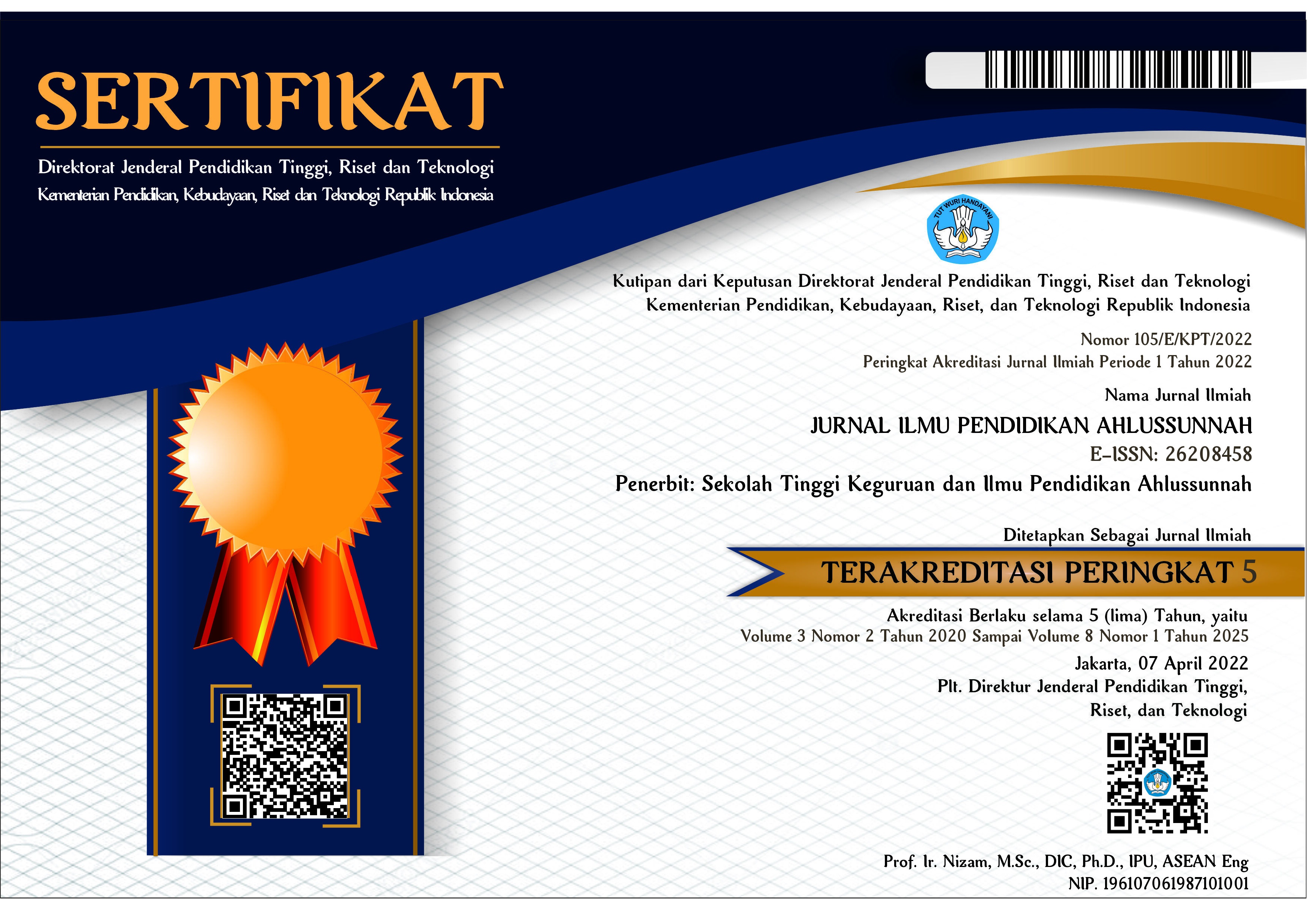THE IMPACT OF USING VIDEO LEARNING MEDIA ON MATHEMATICS LEARNING OUTCOMES FOR FIFTH-GRADE STUDENTS AT SD N 01 RANAH PESISIR
PENGARUH PENGGUNAAN MEDIA VIDEO PEMBELAJARAN TERHADAP HASIL BELAJAR MATEMATIKA PADA SISWA KELAS V SD N 01 RANAH PESISIR
Abstract
learning. The rapid advancement of information technology in recent years has significantly transformed societal paradigms in accessing and acquiring information. These technological advancements have also influenced educational media, with teachers frequently utilizing video media in instruction. The objective of this research is to improve student learning outcomes through the effective application of video media in mathematics education. This research is categorized as a quantitative study employing a quasi-experimental method. It was conducted with fifth-grade students at SD N 01 Ranah Pesisir. The research instrument was designed to evaluate the effectiveness of video learning media in mathematics education. The findings of this study, analyzed using the Paired Sample Test statistical method, indicate a significance value (2-tailed) of 0.000, which is below the alpha value of 0.05. This result signifies that the Sig. 2-tailed value (0.000) is less than the alpha value (0.05), leading to the rejection of the null hypothesis (Ho) and the acceptance of the alternative hypothesis (Hi). Thus, there is a significant difference in students' mathematics learning outcomes before and after the implementation of video learning media.
References
Daryanto. (2012). Penelitian Pendidikan. UPI.
Hamalik, O. (2006). Proses Belajar Mengajar. Bumi Aksara.
Febriani, C. (2017). Pengaruh Media Video terhadap Motivasi Belajar dan Hasil Belajar Kognitif Pembelajaran IPA Kelas V Sekolah Dasar The Effect of Video Media on Learning Motivation and Cognitif Learning Outcomes in Natural Science Subject of the Fifth Grade Students of Elem. Jurnal Prima Edukasia, 5(1), 11–21.
Mulyono, A. (2010). Pendidikan Bagi Anak Berkesulitan Belajar. Rineka Cipta.
Nasution. (1994). Teknologi Pendidikan. Bumi Aksara.
Nugraha, S. A., Sudiatmi, T., & Suswandari, M. (2020). Studi Pengaruh Daring Learning Terhadap Hasil Belajar Matematika Kelas Iv. Jurnal Inovasi Penelitian, 1(3), 265–276. https://doi.org/10.47492/jip.v1i3.74
Sadiman, S. . (2008). Media Pendidikan. PT Raja Grafindo Press.
Salam, R. (2014). Efektivitas Penggunaan Model Pembelajaran Kooperatif Tipe Think Pair Share (TPS) Untuk Meningkatkan Kepercayaan Diri dan Komunikasi Matematis Siswa SMAN 9 Makassar. Jurnal Nalar Pendidikan., 2.
Suharsimi, A. (2009). Manajemen Penelitian. Rineka Cipta.
Saifullah, idris dan T. Z. (2017). Realitas Konsep Pendidikan Humanisme dalam Konteks Pendidikan Islam. Jurnal Edukasi, 74(1 SUPPL.), 96–113. https://doi.org/10.1097/00001888- 199901001-00046
Syaparuddin, S., & Elihami, E. (2020). PENINGKATAN MOTIVASI BELAJAR SISWA MELALUI VIDEO Rendahnya motivasi belajar siswa kelas Paket C. Jurnal Edukasi Nonformal, 1(1), 187– 200. file:///C:/Users/ACER/AppData/Local /Temp/318-Article Text-621-1-10- 20200124-2.pdf
Syamsul, N. (2002). Filsafat Pendidikan Islam Pendekatan Historis dan Praktis. Ciputat Press.
Wiyartimi. (2020). Diagnosis Kesulitan Belajar Matematika Siswa pada Materi Trigonometri Rumus-Rumus Segitiga di Kelas X SMA Negeri 50 Jakarta. Jurnal Matematika, Aplikasi dan Pembelajarannya. Jurnal Matematika, Aplikasi Dan Pembelajarannya, 9.















